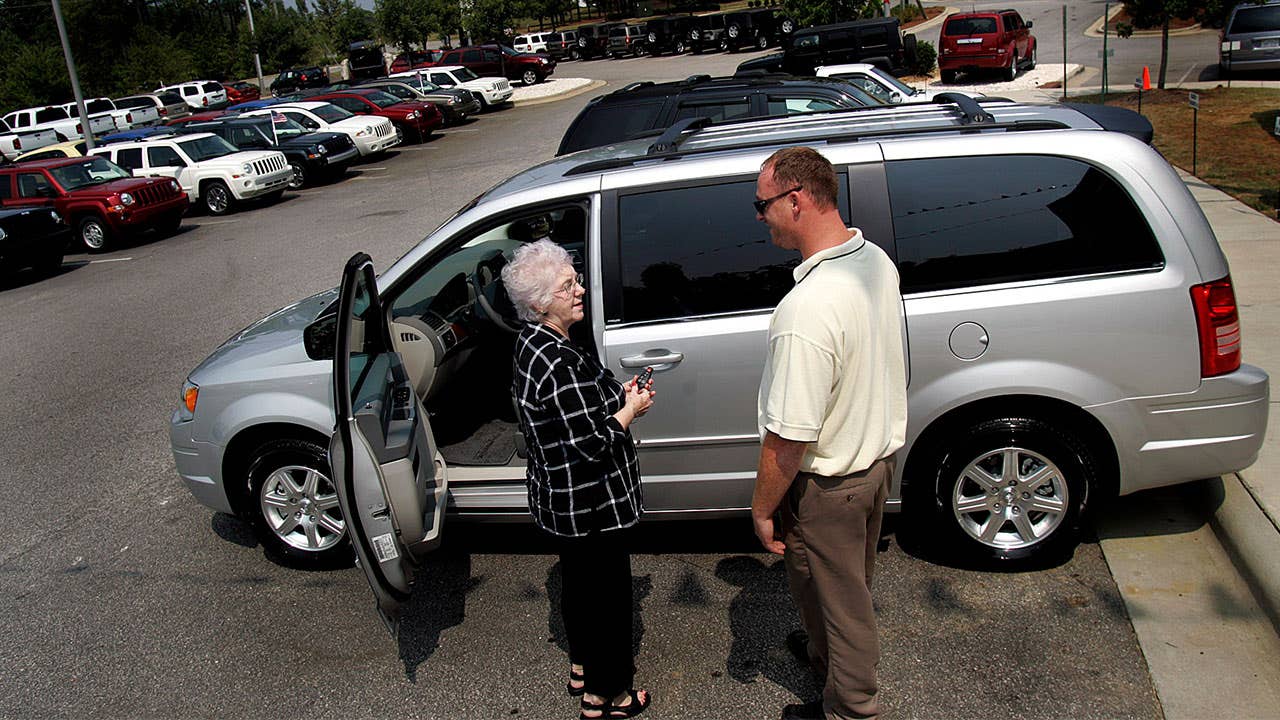Pros and cons of taking over a car lease

Key takeaways
- An automobile lease takeover’s benefits include allowing short-term access to the car, possibly lower monthly payments or even cash incentives from the original lessee.
- Before taking over a lease, consider drawbacks like added fees, more wear and tear on the car, mileage limitations and no chance of renegotiating after you take on the lease.
- Visit websites like Swapalease, LeaseTrader and QuitALease to find people looking to hand over their car lease.
If you want to try out a certain car or only need a car for a short while, taking over car lease payments could be a good option to get behind the wheel. Third-party websites can help you connect with someone looking to end their lease early. However, additional fees and other drawbacks may make it less appealing.
Advantages of a car lease takeover
Assuming a car lease has clear advantages when you want to drive a newer model car for a short period. Taking this approach can make it possible to drive a new car for less than you would normally pay and there may even be a cash bonus added to the deal, among other benefits.
Vehicle availability
Leases typically last two or three years. Finding a good deal on a newer car that isn’t the current model year can be challenging. But you can likely get a fairly new car through a lease assumption.
Short-term lease
While the average leasing contract lasts two or three years, a lease assumption ends sooner. This is because the time the original owner had the vehicle is counted toward the lease’s duration.
The shorter lease period allows you to test drive a vehicle without signing a lengthy contract, meaning less of a commitment is required on your part. It is rare to find that timing available through traditional leasing outlets.
Cash incentives
Many drivers on lease-swapping sites are eager to get the vehicles off their hands. The original lessee may even offer a cash incentive or cash bonus to help entice car shoppers. They may also offer to cover any transfer fees a leasing company charges, saving you hundreds of dollars. Negotiate with the lessee to get the best deal possible.
Lower monthly payments
If the original lessee has excellent credit and made a large down payment, their monthly payment is likely low. You will benefit from their terms since you will be taking on that monthly payment as-is.
You may have higher lease payments if the original lessee had poor credit or made a small down payment. To determine whether a lease takeover makes sense, calculate how much the car payment and auto loan rates would be if you outright bought it or leased it yourself.
You can make use of Bankrate’s auto loan calculator or auto lease calculator. You can also compare against Edmunds to see current lease deals on that make and model of car.
Disadvantages of an automobile lease takeover
Low car payments and the flexibility of a short-term car lease may be tempting, but before you assume a lease, be aware of the potential pitfalls. Take time to review the lease terms carefully, as well as any costs you may incur as part of a lease takeover to ensure the deal truly makes sense financially.
No renegotiation
Typically, not negotiating a lease agreement is a mistake to avoid. But the lease you take over is the lease you get.
You cannot negotiate the terms the original lessee agreed to. If their credit score was low, you might be stuck with higher monthly payments than you would have received yourself. You may also have a higher lease-end purchase price than you would otherwise get. Knowing the basics of a car lease agreement is key to knowing what you are getting is fair.
Limited mileage
Taking over a lease means you must stick to the original mileage limits on the car lease agreement. Leases often limit drivers to 12,000 or 15,000 miles per year, according to the Federal Reserve.
Exceeding this limit could cost you — overage fees range from 10 to 25 cents per mile. Estimate how many miles you will drive before the lease expires to ensure you won’t have to pay a penalty. And make sure the original lessee hasn’t already incurred mileage overage fees.
Potentially high wear-and-tear costs
If the previous driver did not maintain the vehicle, you will be stuck with the wear-and-tear fees. Just like any used car, see the vehicle in person and have the car inspected before you agree to take over the lease. If there is significant wear, see if the original lessee will cover the fees as part of your transfer.
Additional costs
Three primary fees come with a lease takeover: lease transfer, credit application and disposition fees. According to Swapalease, you can expect lease acquisition fees to cost anywhere from $395 to $895.
The acquisition fee may have been bundled into the monthly lease payment. Learn the specifics of these fees before agreeing to the lease assumption to avoid going over your budget or overpaying. Also, look up lease regulations in your state, as some states require the same taxes for a lease takeover as they would for a purchase.
How to assume a car lease
Lessees who want to hand over their leases often list their leases on websites like Swapalease, LeaseTrader and QuitALease. These sites typically allow you to search available vehicles by monthly payment price, months remaining on the lease, car make and model, vehicle year, incentives available and more.
You can also reach out to the leasing company. It may be able to give recommendations or even help connect you with a potential lessee.
No matter which method you use to find cars available to lease through a lease assumption, be sure it is a legitimate source. Check online reviews from past customers if they’re available or the Better Business Bureau (BBB) website for complaints.
Bottom line
If you decide to assume a lease, remember that the responsibility you are taking over is greater than a typical auto lease due to the history of the original driver. You will be responsible for the rest of the payments on the car, including any damage or fees incurred by the original lessee.
Shop around and compare different options before signing any agreements. Before you take over a car lease, check the vehicle history and calculate what you’d pay if you bought or leased the car yourself.
You may also like

How to get out of an auto loan or lease

What to know about short-term car leases

Pros and cons of leasing vs. buying a car



